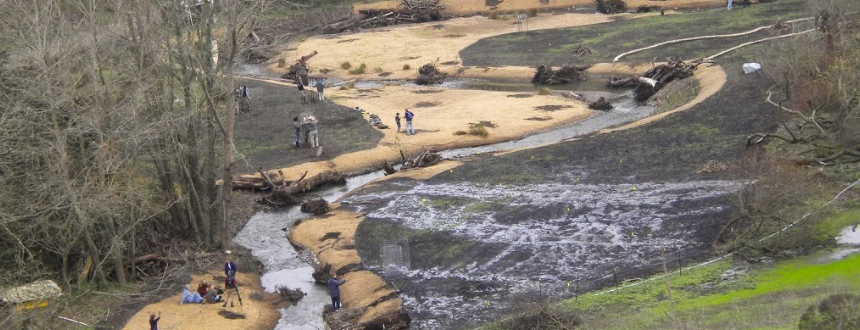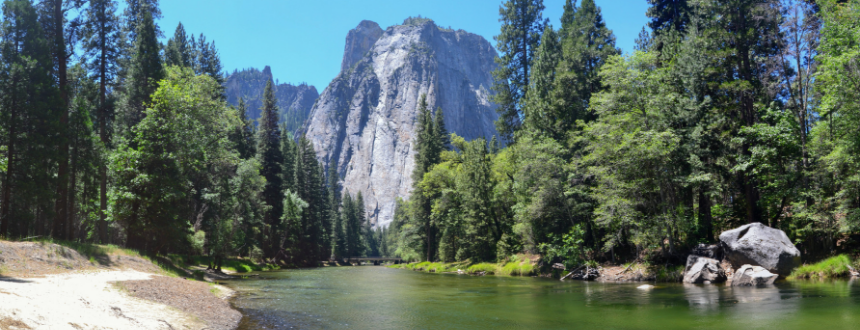
Riparian Restoration, Zen Center on Green Gulch Tributary to Redwood Creek, photo courtesy Sarah Phillips
Riparian zones refer to the rich, biodiverse habitat between rivers and land that experience frequent flooding, have rich productive soils, and provide many ecosystem benefits. Trees and plants in these areas offer habitat to bird species and protection for wildlife, even shading fish from stressful high water temperatures. Riparian zones act as a natural flood control by absorbing and slowing the speed of floodwaters. A slower water flow reduces bank erosion and increases the time for water to infiltrate the soil and replenish groundwater aquifers. The biological processing of pollutants and physical filtering of sediments and organic material also improve watershed water quality.
Riparian and watershed restoration use compost and mulch to help restore natural ecological system processes and functions. Compost and mulch improve physical, chemical, and biological properties of soil by increasing the soil organic matter and moisture retention capabilities. Compost application stimulates the growth of native plants by slowly releasing vital nutrients.

Merced River, Yosemite National Park
Where to Use Treatment
Riparian restoration should occur near a body of water that adheres to the necessary conditions, like frequent flooding, to ensure that the restored land is capable of supporting riparian ecosystem functions. This will include assessment and monitoring of the soils, hydrology, wildlife, and vegetation.
Benefits
- Carbon sequestration
- Wildlife habitat
- Natural flood control
- Groundwater recharge
- Watershed water quality improvement
Design Considerations
- A mulch layer at least 4 inches deep can function as a weed and grass suppressant while retaining the right soil moisture conditions
- Coarse compost should be used and is especially beneficial for areas without weed concerns
- Fine compost should not be used because it breaks down too quickly, is prone to promoting weeds, and adds nutrients to streams that could be harmful to aquatic organisms
Compost and Mulch Treatments Used in Riparian and Watershed Restoration
The following treatments are suitable for use in riparian and watershed restoration:
Resources
- Restoration Techniques
- Recommendations on mulch and compost application, Land Conservancy of San Luis Obispo County Restoration Field Guide
- A guide to Riparian Restoration
- Constructed Wetlands
Research
Golet, G.H. et al. Using Science to Evaluate Restoration Efforts and Ecosystem Health on the Sacramento River Project, Sacramento. California Riparian Systems: Processes and Floodplain Management, Ecology, and Restoration. Faber, P.M. (ed.) 2003.
Resources
For more information contact: Organic Materials, organics@calrecycle.ca.gov

